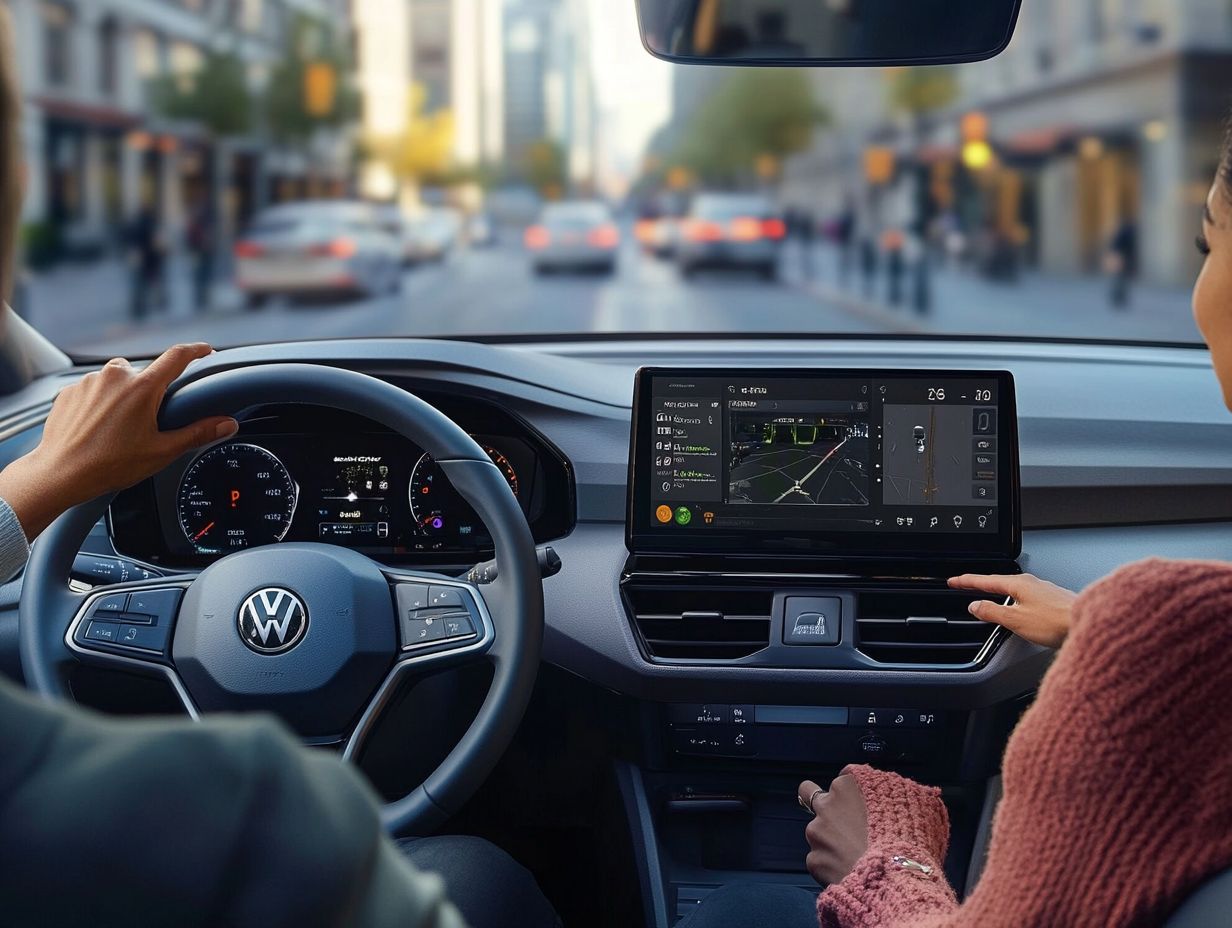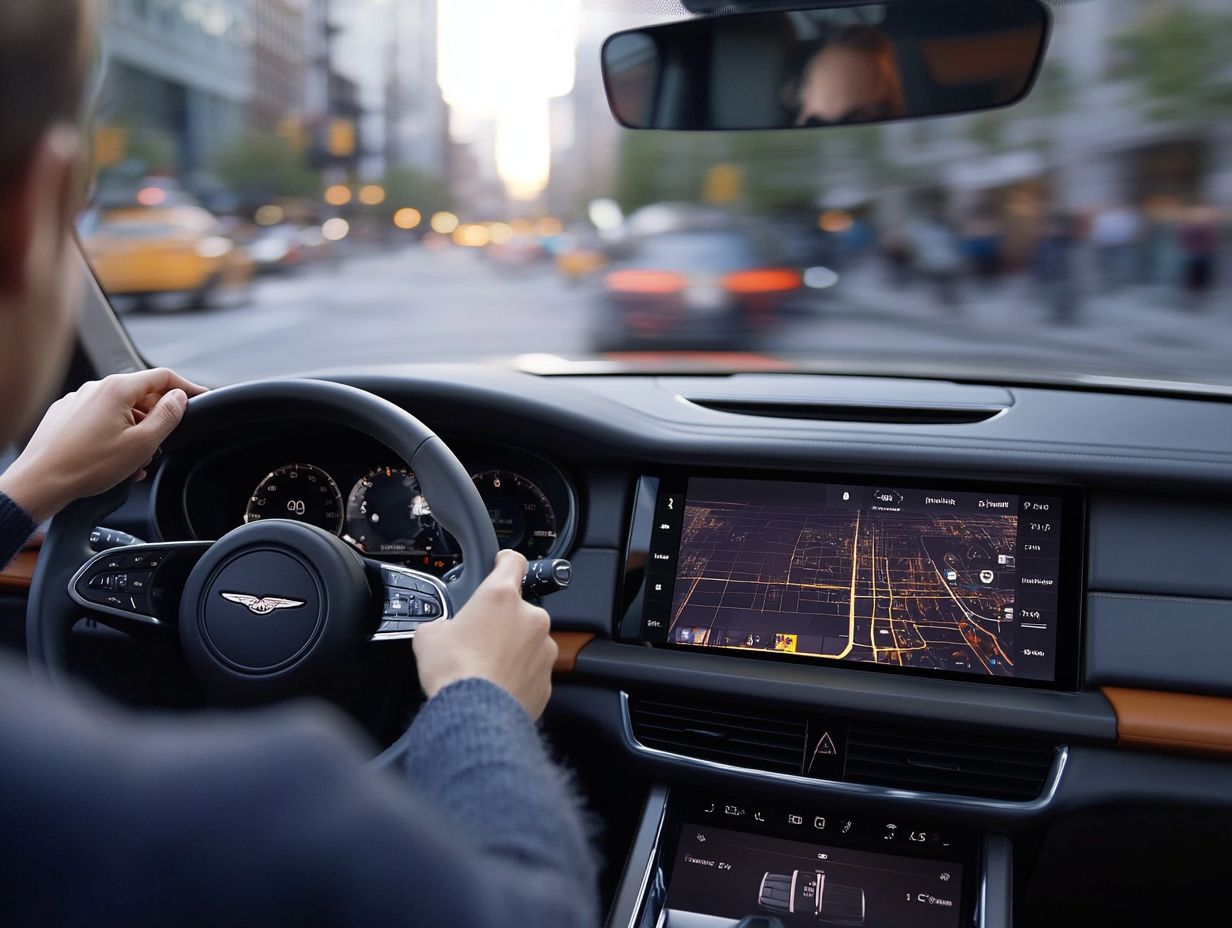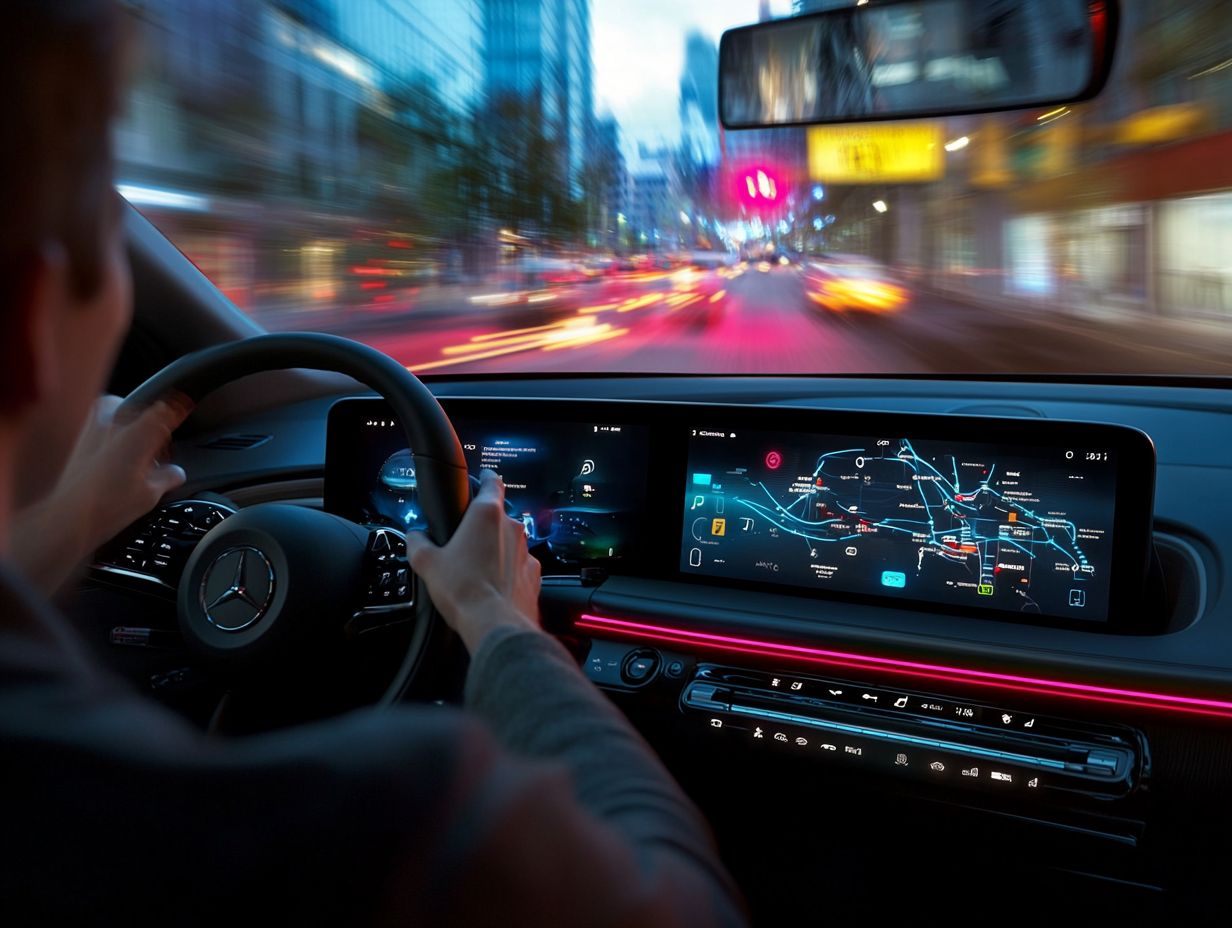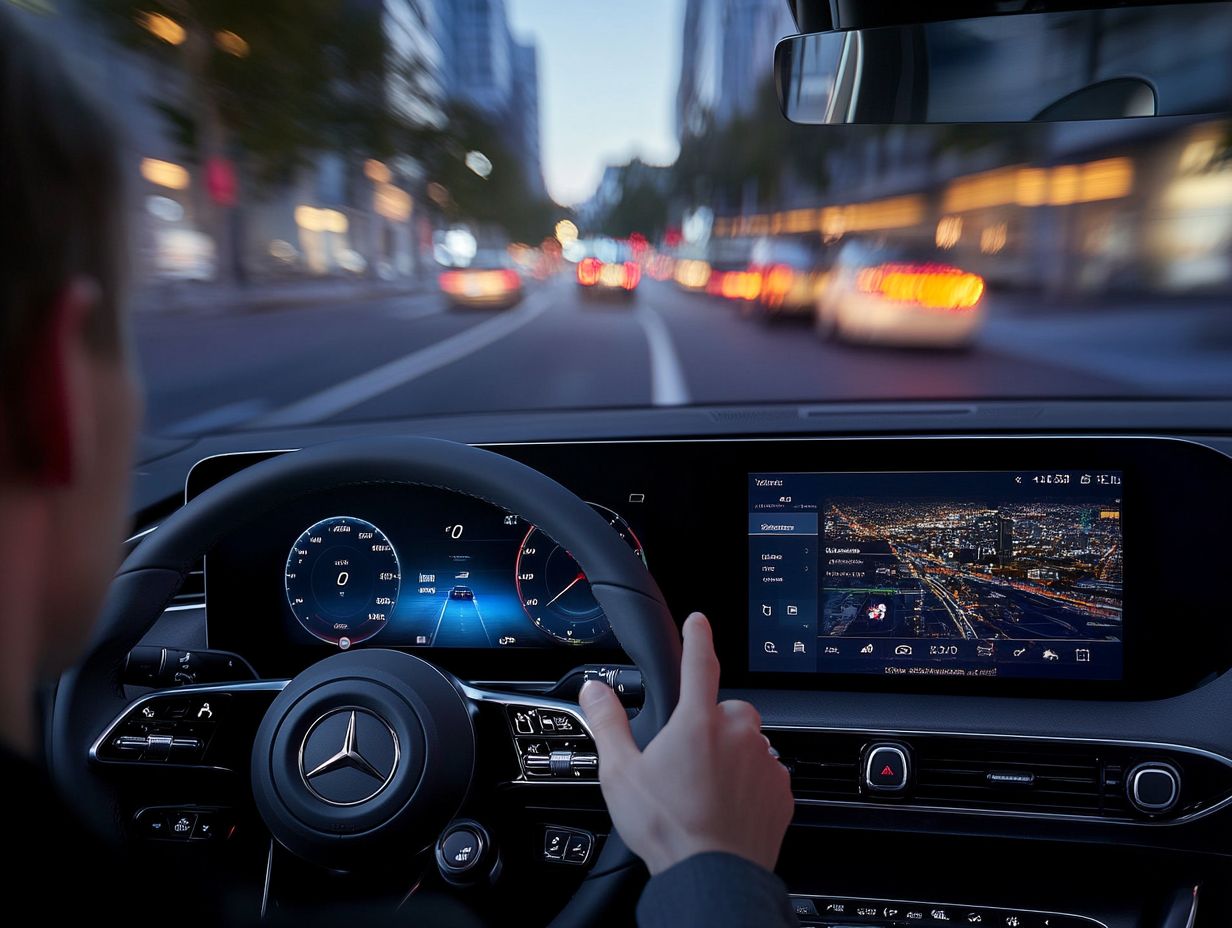Comparing Drive Assist Features in New Cars
Cars are getting smarter! The technologies that enhance your driving experience are evolving too.
Drive assist features are at the forefront of this change, blending safety with convenience.
This article explores different types of drive assist technologies, including adaptive cruise control and lane departure warning. You ll also find tips for choosing the right features for your vehicle.
Get ready for an exciting ride into the world of drive assist features!
Contents
- Key Takeaways:
- Types of Drive Assist Features
- Benefits of Drive Assist Features
- Factors to Consider When Choosing a Drive Assist Feature
- Frequently Asked Questions
- What are drive assist features in new cars?
- Why is it important to compare drive assist features in new cars?
- What are common drive assist features in new cars?
- Do drive assist features vary by car brand?
- Are all drive assist features standard in new cars?
- Can drive assist features take over a driver’s responsibility?
Key Takeaways:

- Drive assist features improve safety by helping drivers stay alert and avoid accidents.
- They also make driving more comfortable and enjoyable, reducing fatigue on long trips.
- Consider cost, availability, and your personal preferences when choosing features for your vehicle.
What are Drive Assist Features?
Drive assist features are crucial components of the automotive landscape. They include a variety of advanced safety systems in cars designed to enhance vehicular safety and improve your driving experience.
These sophisticated systems use cutting-edge technology to help you navigate your driving responsibilities, ensuring functionality and peace of mind on the road.
Typically, these systems incorporate sensors, cameras, and computer technology. They offer functionalities like lane-keeping assistance, adaptive cruise control, and automatic emergency braking.
By continuously monitoring your vehicle’s surroundings, they help reduce the risk of accidents, making driving safer and more convenient for you.
The integration of advanced safety systems in cars marks a significant step toward a more reliable driving environment. These systems address common challenges on the roads and promote responsible driving behavior for everyone.
Types of Drive Assist Features
You’ll find a range of sophisticated drive assist features available today. For a detailed overview, check out the comparison of autonomous driving features, as each is designed to enhance safety and convenience while you’re on the road.
These include:
- Adaptive cruise control
- Lane departure warning
- Blind spot detection
- Automatic emergency braking
These tools aim to make your driving experience not just safer but more enjoyable.
Adaptive Cruise Control
Adaptive cruise control is an innovative driver assistance system that automatically adjusts your vehicle’s speed to maintain a safe distance from the car ahead.
This technology uses sensors and cameras to monitor traffic conditions, allowing your vehicle to respond seamlessly to sudden changes on the road.
By reducing the need for constant acceleration and braking, this system enhances your driving comfort while significantly increasing safety and accident prevention.
Many drivers find this advanced system alleviates the stress associated with high-speed travel and stop-and-go traffic, leading to a more relaxed driving experience.
Lane Departure Warning
Lane departure warning is an essential safety feature that alerts you when your vehicle drifts out of its lane. This significantly enhances your engagement and awareness behind the wheel.
This sophisticated system uses cameras and sensors to monitor lane markings, providing notifications through visual or auditory cues.
By encouraging you to stay aware of your surroundings, it plays a vital role in accident prevention and fosters safer driving habits.
Lane departure warning works together with other technologies like adaptive cruise control and blind-spot detection, creating a comprehensive safety network for your daily commutes and long journeys.
By utilizing these features, you can reduce the risk of collisions and boost your overall driving confidence.
Blind Spot Detection

Blind spot detection is a game-changer for your safety on the road! It uses various sensors to monitor the areas beside and behind your vehicle, letting you know when other vehicles are in your blind spots.
This technology is essential for preventing accidents during lane changes or merging. Typically, it relies on radar or camera-based sensors to detect vehicles or objects in adjacent lanes. When something enters these monitored zones, you receive visual or audible warnings, encouraging you to check your surroundings before making your move.
As the automotive industry advances, improvements in machine learning and artificial intelligence are expected to make these systems even more accurate. By minimizing the risk of collisions, blind spot detection not only protects you but also enhances road safety for everyone.
Automatic Emergency Braking
Automatic emergency braking (AEB) is an advanced safety technology that automatically engages the brakes when it detects a potential collision. This significantly reduces the risk of an accident.
This system uses advanced sensors and cameras to continuously monitor your surroundings, identifying obstacles, vehicles, and pedestrians with precision. When AEB senses an impending impact, it engages the brakes swiftly to either prevent the collision or lessen its severity.
AEB is vital in helping you avoid crashes. Don t take your safety for granted make sure your vehicle has this feature! It plays a crucial role in reducing overall accident rates, highlighting the importance of its inclusion in modern vehicles.
Benefits of Drive Assist Features
The advantages of drive assist features go beyond simple convenience; they transform your driving experience by offering significant safety enhancements and comparing resale value features in cars to increase your overall comfort.
Safety Improvements
Drive assist features enhance safety by using advanced sensor technology and sophisticated algorithms to prevent accidents and reduce risks.
For example, adaptive cruise control is a system that adjusts your vehicle’s speed based on the distance to the car ahead, lowering the chances of rear-end collisions. Lane-keeping assist alerts you if you unintentionally drift from your lane, helping you maintain your vehicle’s position and increasing your awareness of road boundaries.
Automatic emergency braking also springs into action when it senses a collision is imminent, providing a vital layer of protection even if you might not react in time. These technologies work together to boost safety. They help make your driving experience more secure.
Convenience and Comfort
The introduction of driver assistance systems has transformed your commuting experience, enhancing convenience and comfort while allowing you to focus more on the road. With these systems, repetitive tasks are handled seamlessly by your vehicle.
Take adaptive cruise control, for instance. It automatically adjusts your car’s speed to maintain a safe distance from the vehicle ahead, relieving you from the stress of speed regulation, especially in heavy traffic. Similarly, lane-keeping assist ensures that your car remains centered in its lane, subtly correcting your course when needed something invaluable during long drives.
These advanced features not only boost safety but also allow you to enjoy a more relaxed and pleasurable journey, turning mundane commutes into effortless experiences. By integrating technology into everyday driving, these systems usher in a new era of driving ease and satisfaction.
Factors to Consider When Choosing a Drive Assist Feature

When you choose the ideal drive assist features for your vehicle, you must consider a few key factors. Cost and availability play a significant role. You should also assess compatibility with your specific vehicle model.
Don’t forget to factor in your personal preferences, as they will ultimately guide your decision-making process.
Cost and Availability
The cost and availability of drive assist systems can vary significantly. Understanding the role of features in car comparisons is crucial, as some features carry a hefty price tag, while others come bundled as standard offerings in newer vehicles.
You can see this variation clearly when you compare automotive heavyweights like Tesla, BMW, and Ford, each taking a unique approach to integrating these technologies.
Tesla often markets its advanced Autopilot features as premium add-ons. This gives you the option to enhance your driving experience at a cost. In contrast, BMW tends to include a comprehensive suite of driver assistance features in its luxury packages, making them more accessible for those who appreciate elegance in their ride.
Meanwhile, Ford strikes a balance between affordability and technology, offering certain capabilities as standard in select models while pricing more sophisticated options separately. This landscape shows how strategic decisions in feature packaging can impact your choices and perceptions of value in the automotive market.
Compatibility with Vehicle
Ensuring compatibility with your vehicle is crucial when selecting drive assist features, as not every system integrates smoothly with every model.
This compatibility is vital, especially with features like adaptive cruise control, lane-keeping assist, or automatic emergency braking. If a system doesn t align with your vehicle’s make or model, you risk diminished performance or even safety hazards.
Thorough research into how various systems interact with specific vehicle specifications is essential. By prioritizing compatibility, you enhance your vehicle’s functionality and ensure a more reliable, efficient, and safe driving experience overall.
Personal Preferences
Your personal preferences play a pivotal role in selecting driver assistance systems. Different drivers prioritize various features based on their unique driving habits and comfort levels.
If you consider yourself a cautious driver, you likely prefer systems that focus on avoiding accidents and lane-keeping, appreciating the enhanced safety they provide. If you’re an experienced driver who enjoys a hands-on approach, you may be drawn to features that boost performance like adaptive cruise control or automatic parking assistance making those longer journeys more enjoyable.
These choices reflect your individual comfort zones and driving styles, tailoring the driving experience to your specific needs. As technology continues to evolve, understanding these distinctions will be crucial for manufacturers aiming to satisfy a diverse range of consumer demands.
Frequently Asked Questions
What are drive assist features in new cars?

Drive assist features in new cars refer to various advanced technologies designed to assist and enhance a driver’s experience on the road. To make an informed choice, consider comparing eco-friendly features in new cars, which can include things like alerts that notify you if you accidentally drift out of your lane, adaptive cruise control, and automatic emergency braking.
Why is it important to compare drive assist features in new cars?
Comparing drive assist features in new cars allows you to make informed decisions when purchasing a vehicle. For a deeper insight, look into comparing smart parking features in new cars, which helps you understand the available technologies and decide which features are most important for your driving needs and preferences.
What are common drive assist features in new cars?
Common drive assist features include blind spot monitoring, parking assist, forward collision warning, and lane keeping assist. To make informed decisions, it’s essential to consider the key features to compare in cars. These technologies enhance safety and make driving easier.
Do drive assist features vary by car brand?
Yes, features can differ between brands. Some may offer advanced technologies while others might not include certain options.
Are all drive assist features standard in new cars?
No, not every feature comes standard. Some are available only in higher trim levels or as optional packages.
Can drive assist features take over a driver’s responsibility?
No, these features assist but do not replace a driver’s responsibility. It’s crucial to stay alert and follow traffic laws, even with advanced technology at play.





